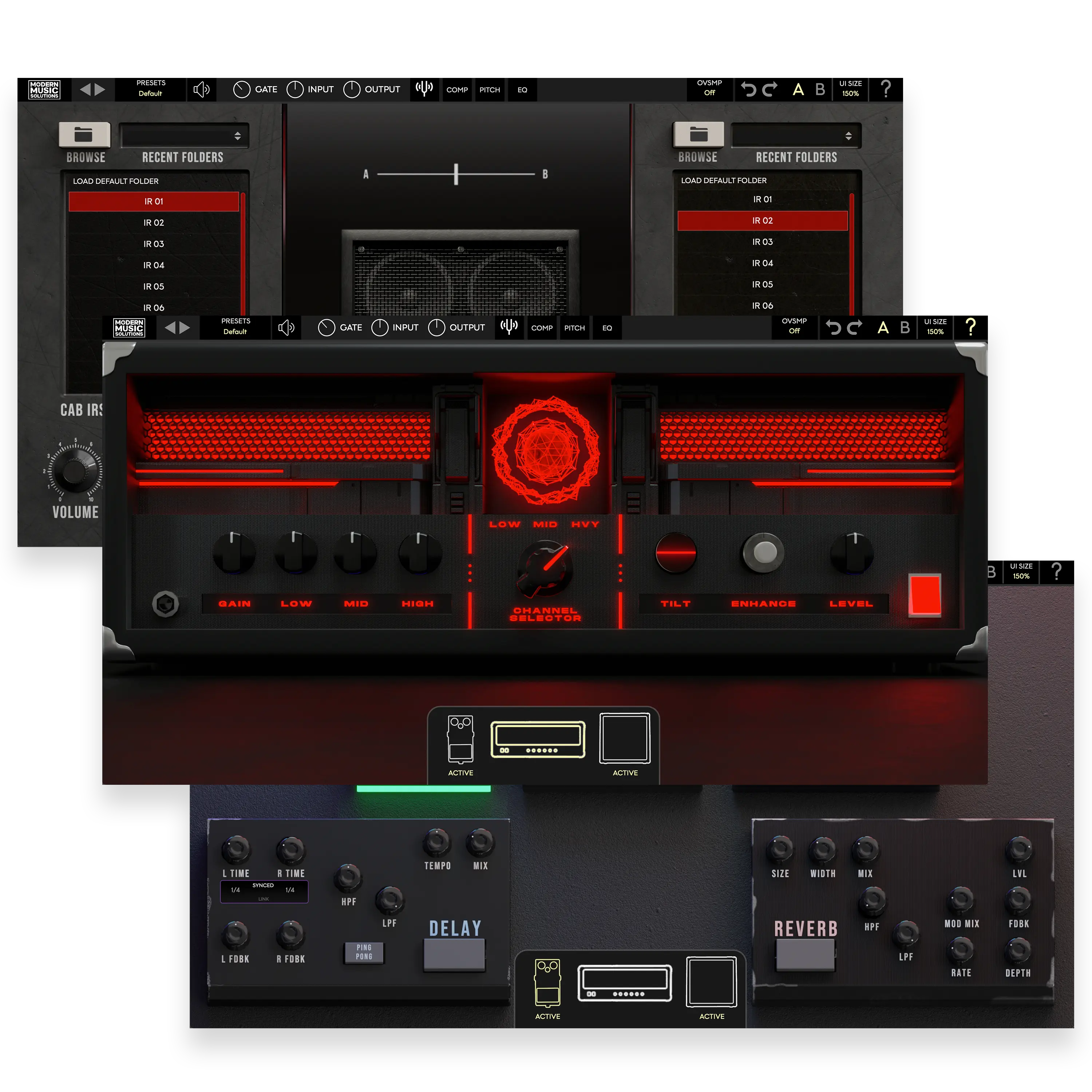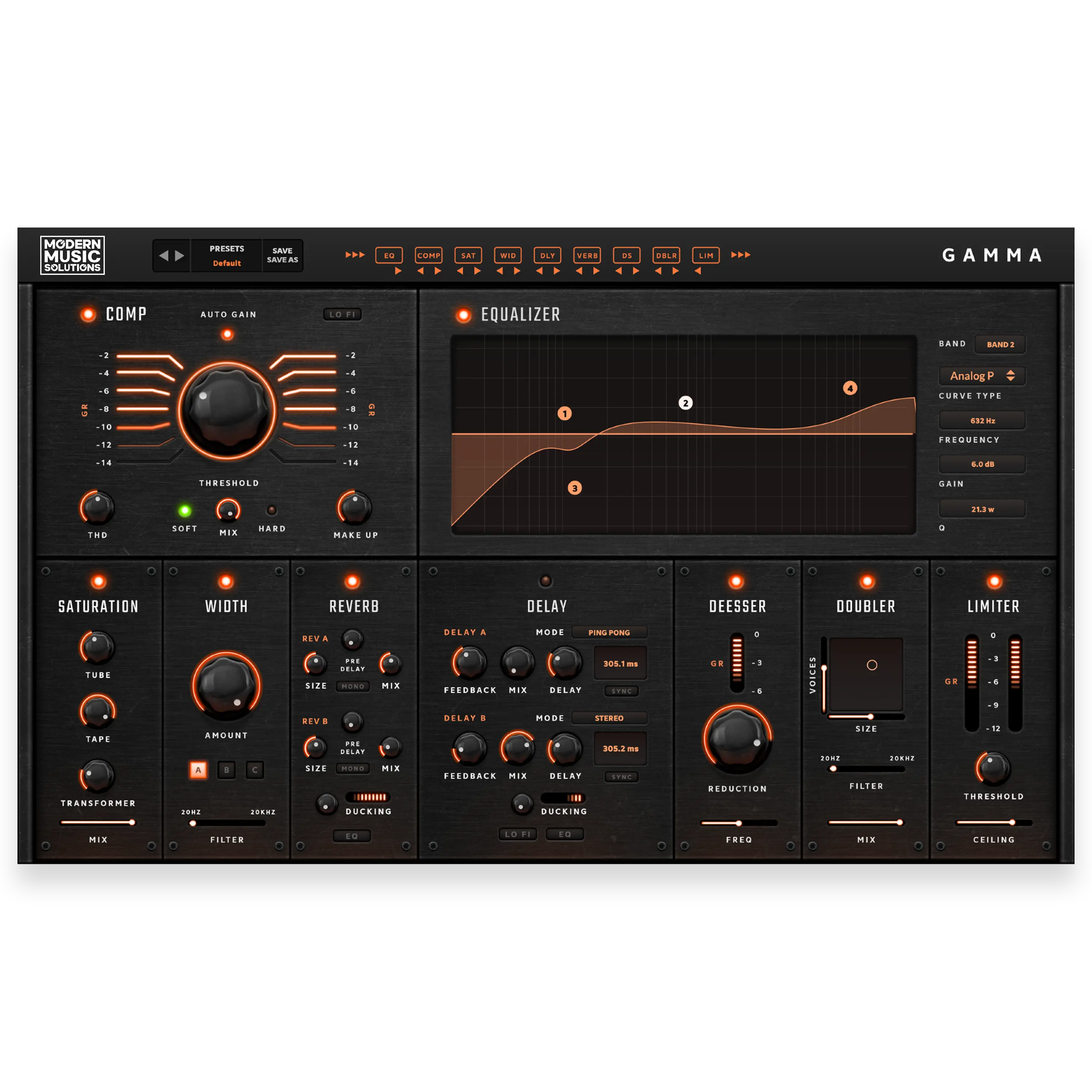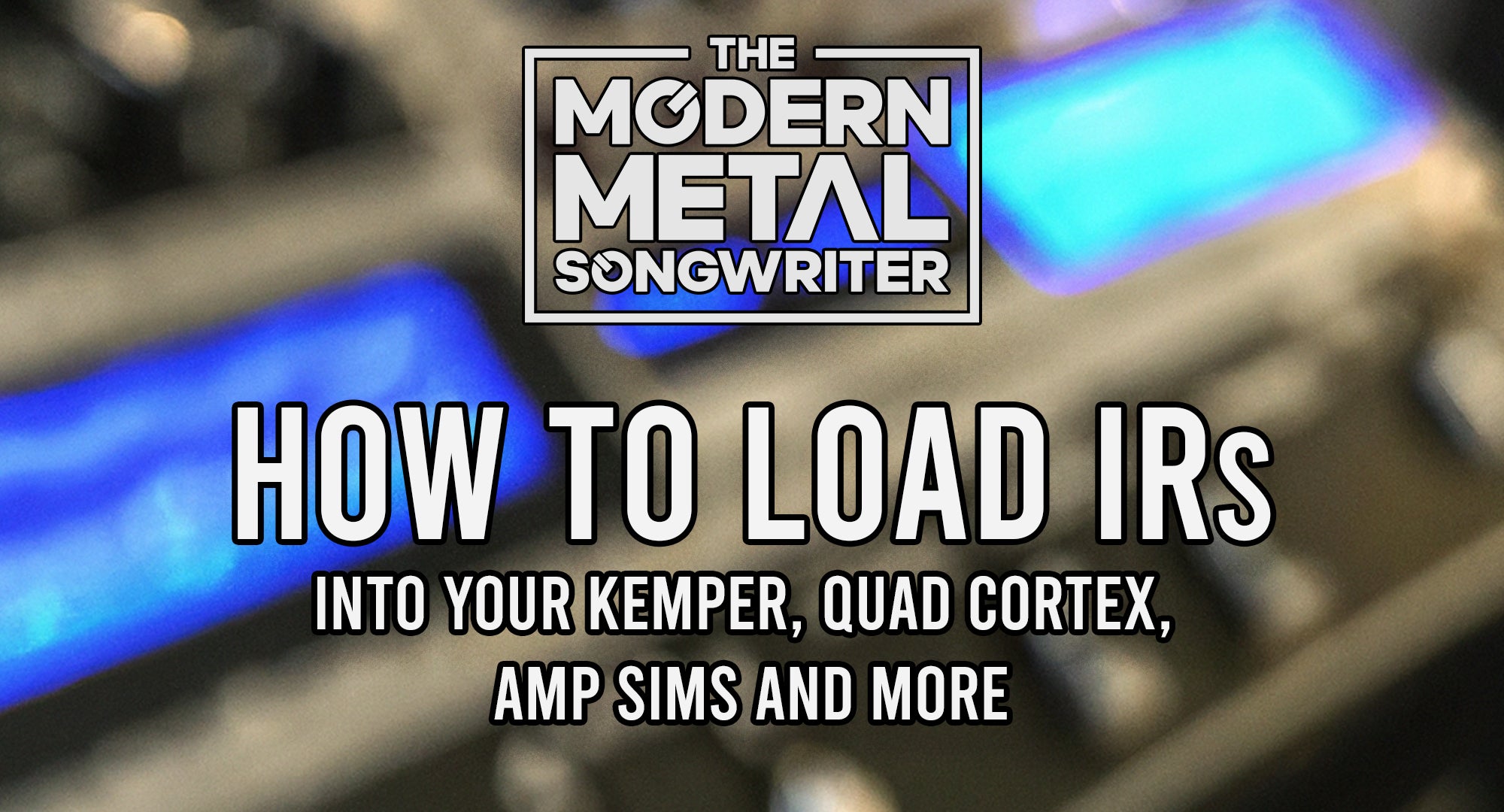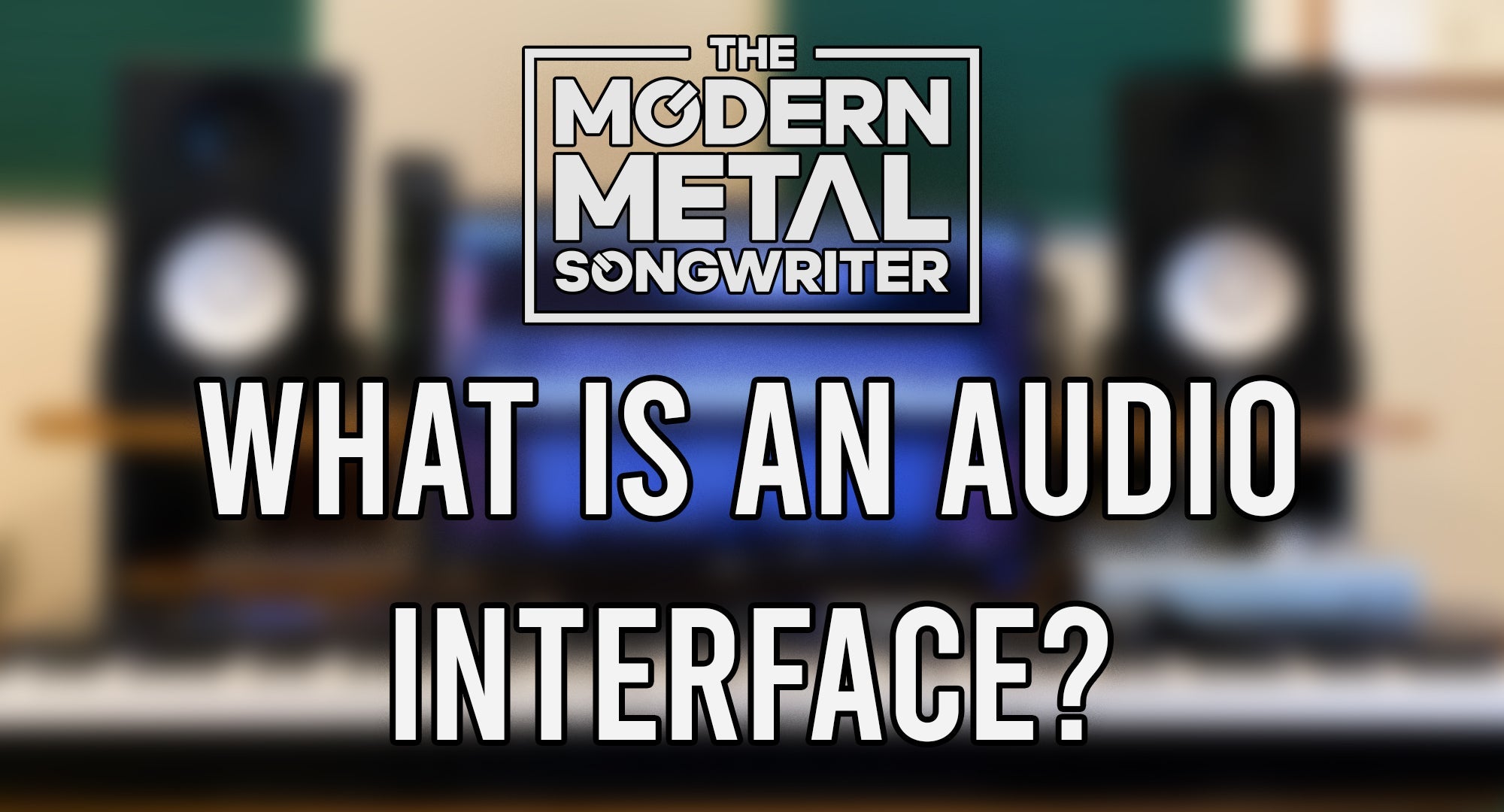Impulse responses have become increasingly popular among guitarists and audio engineers over the last few years, especially with the increasingly impressive amp modeling tech found in hardware, and software these days. But what exactly are they and how do they work?
What is an Impulse Response?
An impulse response (IR) in guitar amp terms, is a digital file that captures the full picture of a guitar cabinet into a microphone, and through the rest of your recording chain. It is essentially a snapshot of the way the microphone captures the speaker cabinets response. If you've ever used an amp sim, or even a hardware modeler, odds are that you have probably used one without even knowing it, as it's a vital part of your guitars sound.
With the microphone choice, the placement and speaker cab being such a big part of your overall guitar sound this allows you to really get in-depth with creating a great guitar tone and make way bigger changes than you ever could just dialing knobs on an amp.
Moving the mic even a few millimeters can make a drastic tonal change on your guitar, so we always recommend checking out different IR's and mic positions before assuming any given amp-head isn't for you! You may be surprised at the amps you have sworn off in the past.
Check out our "Instantly Improve Any Amp Sim" Video for more info on this!
IR's can be used after any direct guitar amplifier sound without a cab emulation. Be sure not to apply an impulse on-top of another impulse or things will start sounding really weird. If you'd like to blend impulse responses, you can use an IR loader that allows you to blend more than one IR into a single signal like our amp sim, Clairvoyant. Blending impulse responses allows you to get a more unique tone, as you can really experiment with your options here!

Impulse responses are created by recording a short burst of sound (known as an impulse) through a mic'd up speaker cabinet and then using a convolution plugin to give you the resulting file which can be used to emulate that entire chain.

From there you can now apply this IR to any amp simulator to emulate using that exact recording setup, without ever needing to re-mic that speaker cabinet again. You can also find many amazing IR's to download online if you don't have the gear or recording knowledge to do this yourself, including our free pack, or our Declassified: IR Pack which features over 120 different impulses across multiple cabinets, speakers and microphones!
How Do Impulse Responses Work?
Impulse responses are used in a variety of ways, but their primary function in guitar is to replicate the sound of a guitar amp's speaker cabinet in a digital environment. This can be useful in a number of situations, such as recording, getting a consistent guitar sound live, and even just practicing or writing at home without the noise of a loud amp, or the tonal sacrifices many practice amps take.
To use a guitar amp impulse response, you will need an amp modeler (such as a Kemper, or Axe-FX) or amp simulator software that is capable of loading external IR's such as Clairvoyant | Amp Suite.
For more information on how to load IR's into Hardware Amp Modelers, check out our blog here!
Once the impulse response has been loaded, you should hear just how much of a difference the cabinet can make to your guitar tone, vs the distortion that comes from the amp head. Don't get me wrong, the amp makes a huge difference, but once you start learning to choose the right IR for your guitars in a given track, you will see just how little processing you need to get it to fit in the mix perfectly.
The Advantages of Using Guitar Amp Impulse Responses
There are a number of advantages to using impulse responses, including:
- Consistency: With an impulse response, you can recreate the sound of a specific speaker cabinet with a high degree of accuracy every time, even live.
- Speed: With IR's you can truly find YOUR sound, by combining different mic positions, and different amp heads and finding what truly works for your without hours inch-ing a mic back and forth.
- Cost-effectiveness: Rather than having to purchase multiple speaker cabinets, you can use impulse responses to simulate the sound of different cabinets.
- Portability: With a device like the Kemper Profiler or software amp, you can carry hundreds (or even thousands) of impulse responses with you in a single device, making it easy to have your preferred guitar tones on hand wherever you go, and without breaking your back.
How to Create Your Own Guitar Amp Impulse Responses
For those of you looking to go deep on this topic, creating your own guitar amp impulse responses is a relatively simple process. Although, it does require some specialized equipment. Here's what you'll need:
- A Clean Power Amp
- A Speaker Cabinet
- A Microphone
- An Audio Interface
- Impulse response software
To create an impulse response, you will need to record a short burst of sound through the speaker cabinet using a microphone and an audio interface. This sound can be generated using a signal generator or by simply playing a guitar chord.
Once you have recorded the sound, you will need to process it using impulse response software. This software will analyze the sound wave and generate a digital file that contains the impulse response.
Check out this tutorial for a more in-depth look at making your own IR's at home!
How to Use Guitar Amp Impulse Responses in Your Setup
Now that you understand what guitar amp impulse responses are and how they work, let's explore how you can use them in your setup.
Choosing the Right Impulse Response
There are thousands of guitar amp impulse responses available, each with its own unique sound characteristics. Choosing the right one for your setup depends on several factors, such as the genre of music you play, the guitar and amplifier you use, and the type of sound you're looking to achieve.
If you're in the market for checking out some new IRs, be sure to check out our FREE impulse response pack, which features some select favorites from our full Declassified IR pack! These IRs are created to be mix-ready as well, so you will spend a lot less time dialing them for your own mixes. Some other popular guitar amp impulse response brands are OwnHammer, Celestion, and Lancaster Audio. These brands offer a wide variety of impulse responses that cater to different sound preferences and requirements.
Loading Impulse Responses
Loading an impulse response into your setup can be done in a few different ways. One common way is to use a digital audio workstation (DAW) or a guitar amp simulator plugin.
To use a guitar amp simulator plugin, you will need to load the plugin into your DAW and then load the impulse response file into the plugin. Once the plugin is loaded, it will process your guitar signal and apply the characteristics of the impulse response file.
Another way to use impulse responses is to use a hardware device like the Kemper Profiler or the Line 6 Helix. These devices allow you to load impulse responses directly onto the device, making it easy to switch between different sounds on the fly when performing live.

Conclusion
Impulse Responses are a powerful tool that can help you achieve the perfect guitar tone in a variety of situations. Whether you're recording in the studio, playing live, or just practicing at home, impulse responses can provide a level of consistency and flexibility that is difficult to achieve with traditional speaker cabinets, while capturing a nearly-perfect representation of it's sound at a fraction of the cost, and volume.
We hope this article has provided you with a comprehensive understanding of what IRs are and how they work. If you're interested in exploring this technology further, we recommend checking out some of the many impulse responses that are available on the market.
If you'd like a free IR pack to try this out yourself, click here!
Happy Songwriting!
![Understanding Impulse Responses and How They Work For Your Guitar Tone [FREE IR's Included] ModernMetalSongwriter graphic](http://modernmusicsolutions.com/cdn/shop/articles/Understanding-Impulse-Responses-and-How-They-Work-For-Your-Guitar-Tone-_FREE-IR_s-Included_-ModernMetalSongwriter-17862726.jpg?v=1697220859&width=1500)


